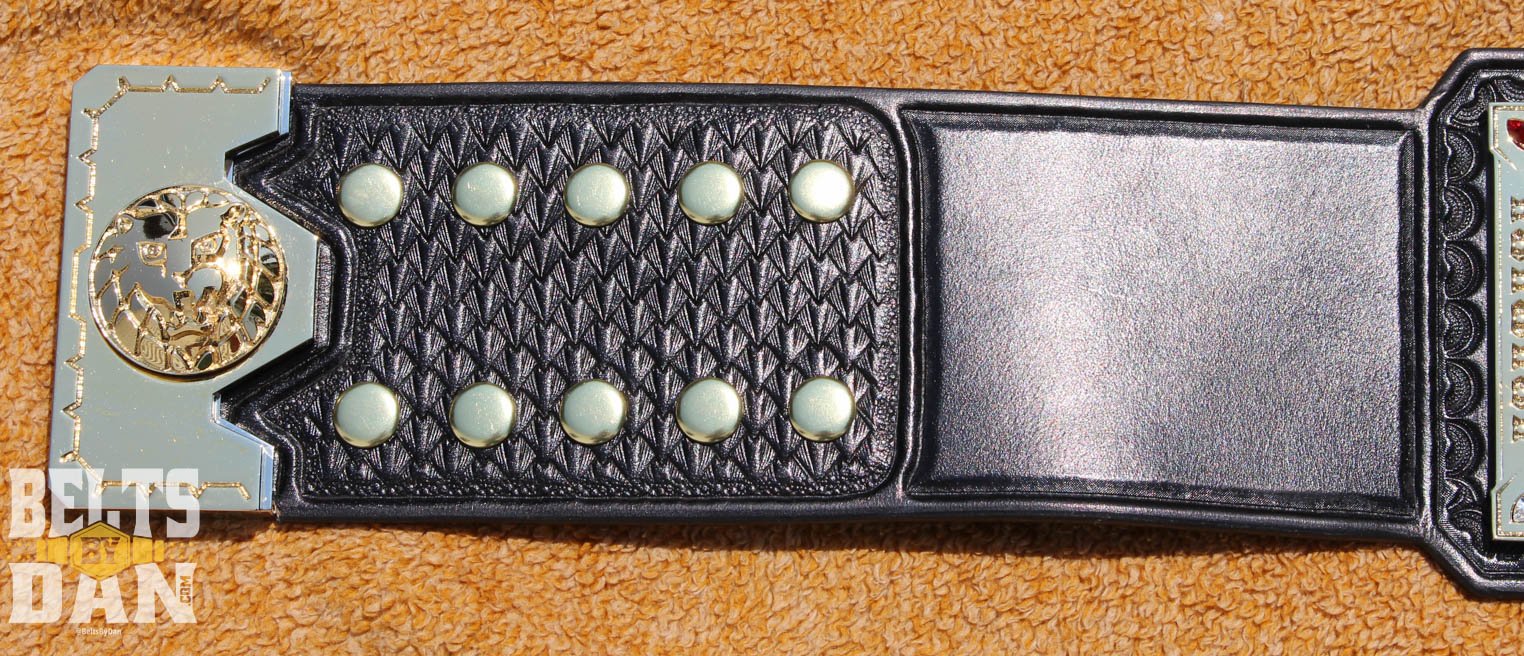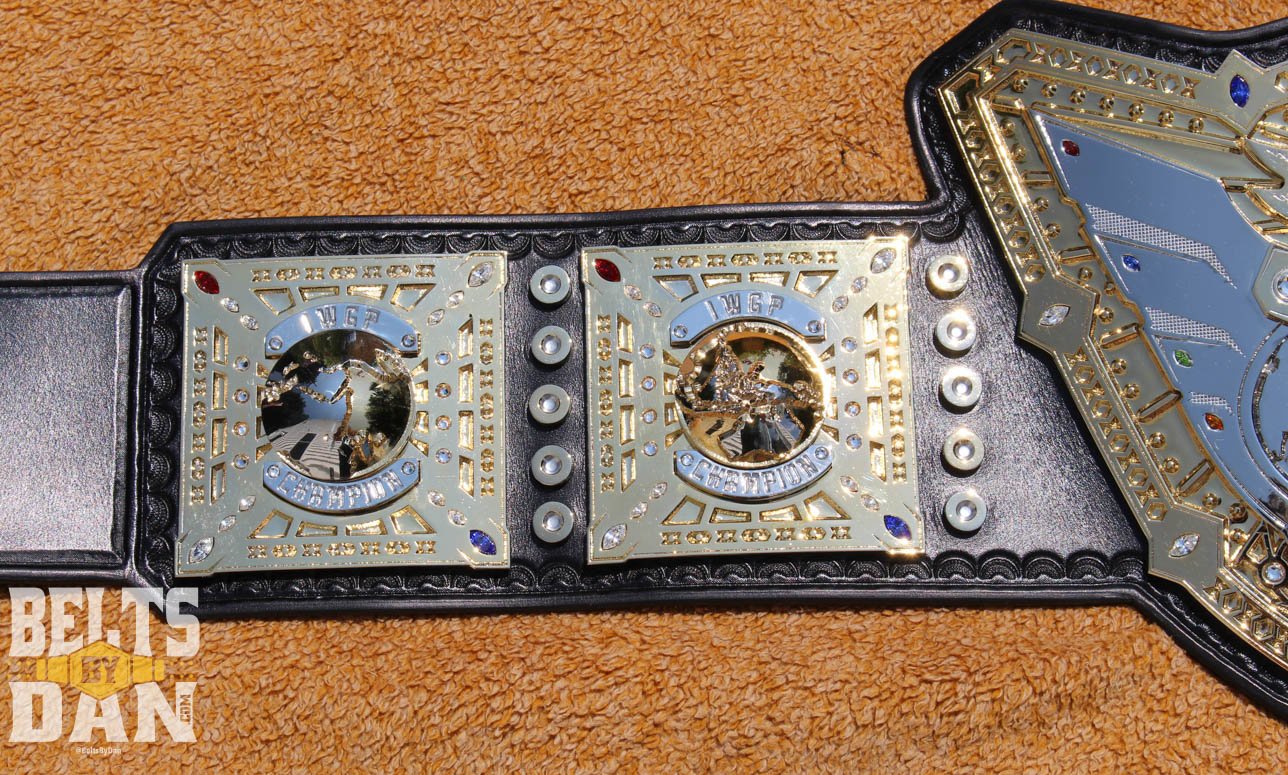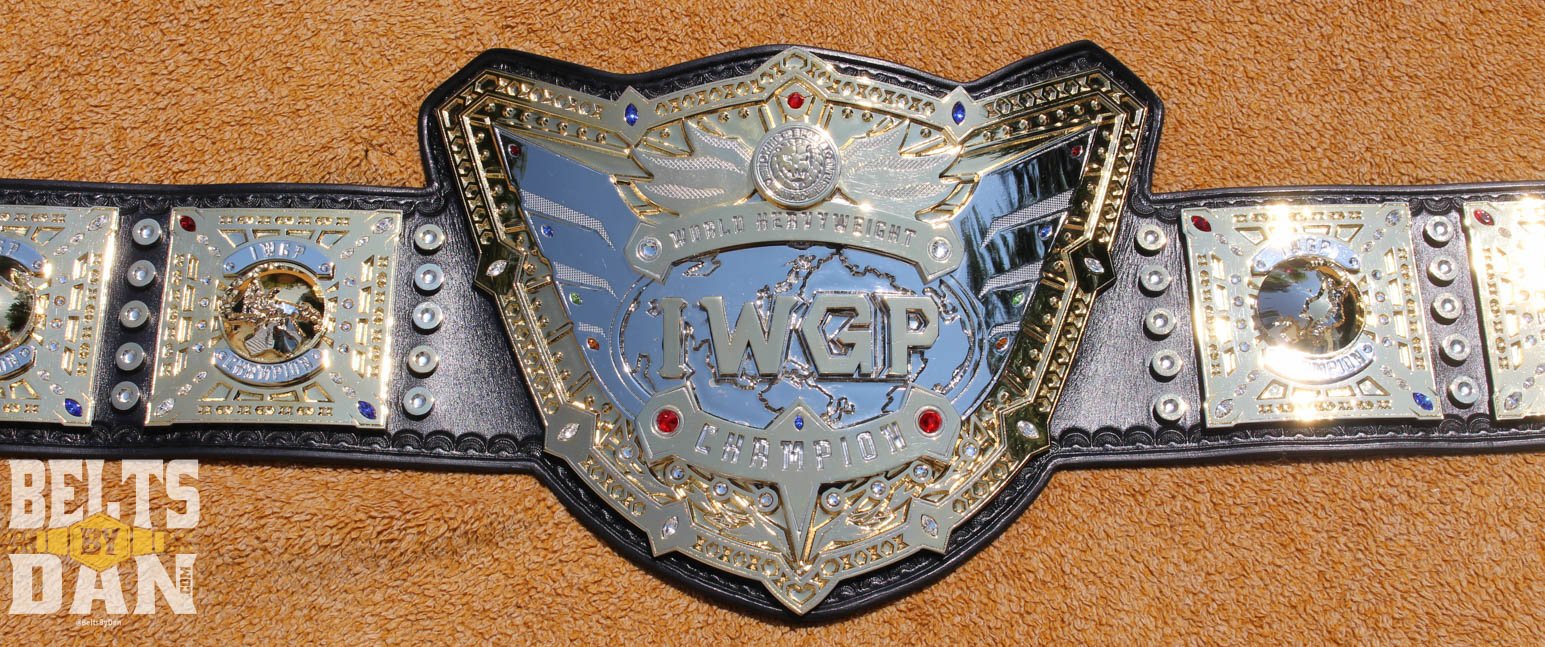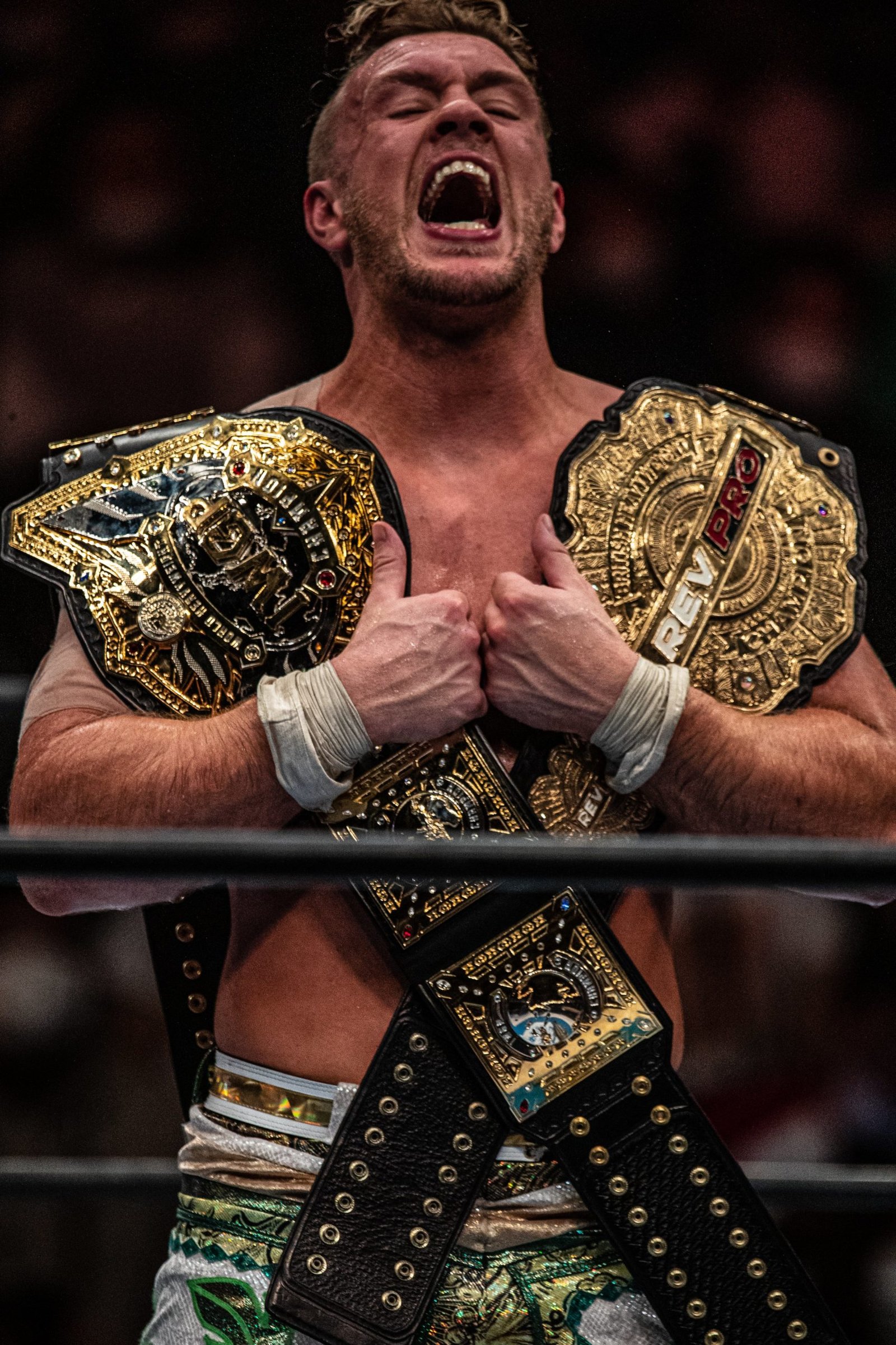by Colin McNeil
Kenny Omega may style himself as “The Belt Collector” these days, but he’s got nothing on Dan “Belts By Dan” Van Alst. An IT professional in the cyber security business by day, Van Alst has spent the last few decades turning his passion for physical title belts into a business. A self-taught creator, he’s provided hardware for everyone from AEW to the New York Yankees. But his most famous creation is one every reader of Monthly Puroresu probably has an opinion on — the IWGP World Heavyweight Championship. So how did a fan who started off repairing replica belts for other enthusiasts get the call to craft the most prestigious wrestling championship in the world?
It all started with an opportunity for New Japan STRONG, the weekly wrestling television show launched in Los Angeles last August as a vehicle for NJPW’s LA Dojo talent. “Due to the travel restrictions with COVID, they needed a belt to be defended on this show,” Van Alst said in an interview with Monthly Puroresu. “So David Marquez called me up.”
Marquez, who was involved with the NWA and had worked with Van Alst on several of that company’s own most recent straps, was by that time producing the New Japan STRONG program.

twitter/taigaPhoto_PW
“They ordered that Strong belt and I think it was supposed to debut first week of February or last week of January and based on how the tapings got bumped and talent got moved around, that belt got delayed for a month or two even though that was a rush order,” he revealed.
The origin of the Strong belt’s distinct look is a bit of a quirky one. Van Alst says he based it off another design he’d done years before for the Bojangles Restaurant chain. That belt included a spinning cajun filet biscuit in the middle.
But spinning gold sandwich or not, Van Alst delivered and NJPW were clearly pleased with the result.
“They liked the quality, liked the turnaround time and I thought that was going to be it,” Van Alst said. “Then a few weeks later I get a call from somebody on the New Japan side.” The topic of discussion on that call? Making a backup copy of the then current IWGP Heavyweight Championship belt.
“They said ‘this belt is getting pretty beat up, how much would it cost for you to make an exact copy of this?’” That question wasn’t an easy one to answer. NJPW didn’t have the original art for the belt, so after analyzing pictures online and doing the math from scratch, Van Alst came up with a plan to remake one of wrestling’s most beloved buckles and sent it off.
“I didn’t really expect anything else to come of that,” he said.
And then the email came: “We’re going in a different direction, we’re going to have a new belt made, and we’d like you to do it.” To say it was a dream job for Van Alst might be under-selling it.“Is this real? Are they really asking me to make them a belt?” he asked himself. “Being an American and being U.S. based everything is kind of WWE-centric, so when you’re making belts your goal is: ‘Hey someday I want to make a belt for WWE, I want to see my belt on WrestleMania.’ But if you’re a die-hard wrestling fan you understand the prestige that the New Japan belts have.”
“I would never think New Japan would come to me for a belt. That wasn’t a goal, that wasn’t something on the list, that was something so far out of left field… that’s the only way to describe it. I wouldn’t have guessed in 1,000 years that this company would even have contacted me.”
 But the gig of a lifetime didn’t come without its own bittersweet complications.
But the gig of a lifetime didn’t come without its own bittersweet complications.
“I’m a belt fan and a belt collector first,” Van Alst said. “I share the same sentiment with the majority of fans. The [NJPW] version four heavyweight belt is, if not the [best belt design], it’s probably one of the top five wrestling belt designs in the history of wrestling belts,” he said.
“I love that other belt so much, and now I have to be the one that puts it out to pasture.” There was little time to sit around and worry about history, though. The deadline for NJPW’s new belt was a tight one and working with a company halfway around the world during a global pandemic came with its own challenges.
Step one was concept art. Flat drawings of the belt concept were provided by NJPW via an artist hired for the job.
“I got an email with hand drawings,” Van Alst said. “First [the artist] did sketches in marker and then watercolour. These are all Japanese style drawings and they have Japanese words and phrases on the outside and circles — it’s directions in Japanese. So I had to get a translator.”
Next, to turn lines on paper into a physical reality, Van Alst had to remake the art digitally from scratch using the drawings as a guide. Then there’s the process of getting the raw zinc plates that form the base of the belt acid-etched with the new design.That’s how most designs on the belts you see are created — using an acid-etching technique that carves out a high and low point on the surface of the base plates.
Those zinc plates in turn get copper plated, then covered in nickel through a process called electroplating. The tricky part here, Van Alst said, is that the copper plating process requires materials most of us don’t exactly have lying around in our garage. “The only way you can get copper to stick to zinc is using cyanide-based copper,” he said. “And most states do not allow the average home tinkerer to use a cyanide-based copper.”

c/o Dan Van Alst
This first plating step is critical to the rest of the process.
“If your copper layer has any imperfections it will bleed through anything else you put over it,” said Van Alst. “So technically the copper plating is the most important part of the plating process.”
Once the copper is on, nickel gets electroplated over that. That’s the silver-looking metallic surface you see on most belts, not actual silver.
Then comes the gold. Van Alst does all the gold for the belts himself, using a brush plating technique to pick out which parts of the belt need to be gold and which stay nickel.
The result is a nearly 16 lbs. belt with a main plate that’s four layers thick, side plates two layers thick with domed globe pieces added on, and 50 pointed-back Swarovski crystals hand set throughout.
Those crystals include red and blue coloured stones set opposite each other in each side plate and in the main plate — mimicking the two opposing corners of a New Japan ring.
And for the real belt nerds out there, Van Alst told Monthly Puroresu he did something for the World Heavyweight Championship he’s never done for any other belt before — attach a single-piece milled aluminum tip on the end of the leather strap.
“The lion’s head has a screw behind it, welded to it. That screw goes through all of the pieces and then there’s a nut hidden under the leather behind the tip that secures it in place. Most, actually all the wrestling belt tips you see are glued on. And with years of use in some cases they’ll eventually fall off or pop off. I realized this belt is going to get a lot of use and possible abuse, so I wanted to make sure the tip didn’t go flying off,” he said.
“It’s the first time I’ve done a custom single-piece milled tip on a belt.” The new World Heavyweight belt has another, more obvious, distinction too. It’s big. Really big.

c/o Dan Van Alst
“This belt is bigger than the prior belt, it’s longer than the prior belt, it’s heavier than the prior belt,” said Van Alst. “Which is interesting because a lot of the people online that were talking bad about it thought it was small.”
So big, in fact, extra snaps had to be added to the leather strap to fit around Kota Ibushi’s trim waist. All this while under a deadline tighter than a Great-O-Khan Iron Claw, and grappling with just a little bit of anxiety about how the new belt would be received.
“I’m replacing a belt that I love. I’m doing a design that I know is going to get some negative feedback and then on top of that it’s a rush belt.”
Less than a year into its life cycle, the World Heavyweight belt is not totally unique. And while the hardware currently wrapped around the waist of a certain British wrestler may look like a doppelganger to the one in Japan at first glance, Van Alst said Will Ospreay’s version is close but not an exact twin of Shingo’s.
And he should know, he made that one too. “The easiest way to tell them apart is the snaps,” he said. “They added the snaps to Shingo’s and his side plates are larger.” The snap boxes have also been reversed on the Ospreay version, the lion mark on the tip is domed instead of being a flat raised piece, and the tooling design on the leather strap has been rotated to look more like dragon scales. Appropriate enough for Shingo Takagi, if he ever gets his hands on the second version.

twitter/taigaPhoto_PW
If you’re reading this, you probably have an opinion on the IWGP World Heavyweight Championship belt. Maybe you love it. Maybe you don’t. Maybe you’re unhappy with the retirement of the Intercontinental and Heavyweight belts. Maybe it reminds you of the WWE Divas belt, or the tattoo on Cody Rhodes’ neck.
However you feel about it, Van Alst said he knew from the day he first saw those watercolour drawings that this belt would court controversy.
“The internet wrestling community shits on any change,” he said. “Doesn’t matter if it’s for better or for worse, anything new, anything different is always going to be crapped on. And I was expecting that from day one.”
And for those who still aren’t in love with the winged replacement for NJPW’s beloved IC and Heavyweight straps, Van Alst said two things might change their minds: a deeper look at how this belt pays homage to those that came before, and time.
“It’s like an onion,” he said of the World Heavyweight belt’s look. “You’ve got to peel the layers away and you’ve got to understand the reasoning behind it. I think a lot of the outrage at first was just based solely on the design, and if people took enough time to actually read into and understand the historical significance then they might have a little greater appreciation for it.”
And there’s plenty to appreciate. There’s the crown-like silhouette that conjures images of the heavyweight belt of Shinya Hashimoto’s era, the wings that recall the third generation design that came after, and the globe motifs that bring to mind the Intercontinental championship. There are five gems on the main plate for five decades of history, and more references and meanings that we have space to list here.
But more than any design philosophy, any amount of gold, crystals or machine-milled metal, Van Alst said the key to a great belt is the waist it gets strapped to.
“Just like any title, the belt is a physical prop. It’s the champions that are going to make the belt, and it’s the matches — the historical matches — that people look back on in five, 10, 15 years that are going to point back to it.”
Date:
April 17, 2022
Category:
Features